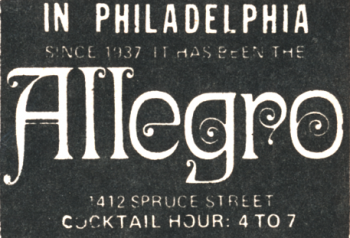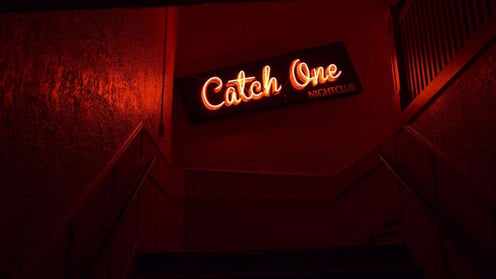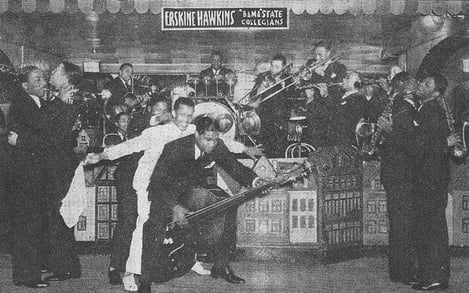I’m a historian, so it’s not going to shock you that I want you to love history like I do. However, I’m going to assume that not everyone reading this (or even the majority) are going to share my passion (obsession?) with history. Part of this is because many understandably don’t see history as integral to our daily lives. Black History Month exists just because we were told in school that our past was important, right?
We’ll hopefully read plenty of inspiring tales this February of African American heroes, both familiar and unfamiliar. Granted, we ought not keep our study of Black history to twenty eight days, but Black History Month is a nice reminder of the incredible legacies made by people like Claudette Colvin, Ida Wells, Harriet Tubman, Marian Anderson, and Shirley Chisolm, not to mention Black LGBTQ+ Americans like Barbara Jordan, Laverne Cox, and Marsha P Johnson.
There’s nothing wrong with this kind of remembrance of the past. After all, history is about actual people, so it makes sense that biography can be an effective way to analyze the past. But beyond thinking about Black history as simply the retelling of a person’s accomplishments, I hope we as a society can start thinking about how African Americans have shaped our cultural spaces, the sites we walk past on our way to work in the morning, or the places we relax at on the weekends.
When I think of spaces at the center of the Black experiences, sites like the barbershop and the church easily come to mind. But what of LGBTQ+ African Americans? Thanks to the generous support of Point Foundation, I’ve been researching and writing a chapter this spring for my dissertation on, amongst other things, resistance to racial discrimination at gay nightlife spots in the 1970s through 1990s.

For decades, Black gays and lesbians faced discrimination at gay bars. They were refused entry at the door and forced to show multiple forms of ID, while white gays and lesbians simply walked right on inside. Some bars raised the price of drinks to dissuade certain minorities from patronizing, while others refused to play kinds of music popular with black communities. This happened all over the country, from New York to San Francisco, to Houston and Indianapolis. Some African Americans chose to fight this discrimination in the press or the courts. In Philadelphia for example, anti racist activists formed the Coalition on Lesbian-Gay Bar Policies in the 1980s to combat this kind of discrimination.
Other African American lesbians and gays had no interest, though, in trying to integrate into a place they felt unwanted. They instead formed communities and socialized on the streets or at majority Black gay house parties.
Despite these non commercial alternative sites, Black gay bars were formed across the US, fully embracing a community neglected by the wider gay community. In DC, African Americans frequented the Rail and La Zambra. In Philly, it was Smart Place, the Ritz and Allegro II. In LA, the Jewel’s Catch One outlasted all gay Black clubs.

What attracted African Americans to new clubs that catered to their interests? For one, Black bars allowed for greater expression that Black LGBTQ+ folks claimed they couldn’t find at white bars.
One African American club goer told the Washington Post in 1981 “[White gays] have good restaurants, happy hours at their bars and places to congregate and talk. We, on the other hand, have limited opportunities to express ourselves. Black gays are limited to a cruise bar or a disco bar. I’m sick of both.”
Black bars were also used in different ways. Black gays and lesbians utilized their bars beyond simple social sites. By the 1980s, Black gay men saw predominantly Black bars as more communal than typical white gay nightlife; that is, while social clubs served as places of leisure and enjoyment (places to grab a drink or dance), they also served as formal community centers, fundraising operations, and educational support groups. This was especially important at the outbreak of AIDS, when channels of communication across communities proved vital in efforts to curtail the crisis. Black bars were, as one patron called them in 1994, “a meeting ground . . . [not just] for cruising or looking for lovers . . . [but] to hear the latest gossip: who around is doing what, who just got a new job, who’s in their old relationships. . . We do not have a Black press, the gay press in [Philly] is dominated by the white community.”
So, why does reframing the gay bar as a Black space matter? I think it’s important to see our queer communities through a historical angle to help us make sense of current moment. What does the fall of gayborhoods mean in the context of gentrification? Do Black gay bars complicate a common myth we’re told that African Americans are more homophobic than other communities? How can places we find as relaxing and fun be harnessed for political ends by others?

Source: Trent Kelley on Flickr
So much of what we read about Black History Month will be centered on the Civil Rights Movement, of the campaigns to desegregate public schools, buses, and swimming pools or the separatist aspirations of some Black leaders. It’s important to understand the similar campaigns for racial justice occurred among LGBTQ+ communities across the country, to rid their gay liberation movement and culture of the scourge of white supremacy and apathy. Some activists attempted to integrate the predominantly white bars. Others decided to find refuge in bars of their own. In the end, we should remember that Black History Month is tinted with plenty of rainbow.

This post was written by Point Alum Eric Gonzaba.
Eric is studied history at George Mason University and hopes to empower others to uncover the complicated and often overlooked histories of LGBTQ+ people.